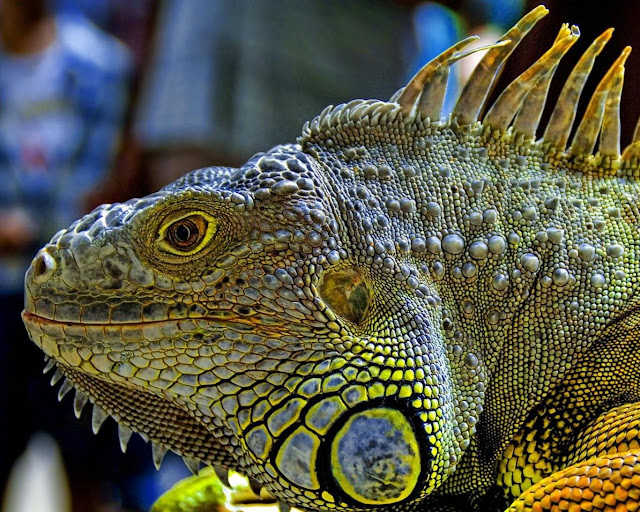The term giant green iguana refers to the giant lizards. They are said to be giants because they grow up to five to six feet in a span of four to five years. If you prefer not to have a big lizard under your care, then do not opt for a giant green iguana. There are no dwarf versions of this species so you must understand from the very start that green iguanas by nature can grow really large. You cannot by all means make an iguana a dwarf version not unless you expose it to severe chronic malnutrition and then to continuous hypothermia.
Of course, when you do safe keep it on a tank that measures only up to ten gallons, its normal growth will be hideously hindered. Such kind of environment will also make the iguana sick and crazy to the highest level. If you are really serious in making the iguana appear small, then kill it slowly. Killing it slowly means keeping it in a very small-spaced tank container, giving it dull food to feed on, and then exposing it to extreme cold. You may likewise try to be humane and just simply buy a stuffed toy iguana.
The iguanas are naturally from the exotic tropical areas so when they are taken in as pets they must be fully maintained. Meaning, they must be catered with sufficient and healthy food, homey housing environment, proper lighting, and utmost tender love and care. In the absence of any of these factors, they can be subject to premature death. It is a must that you know for a fact if you will love to take care of a giant green iguana before purchasing one. They get extremely huge and live a span of twelve to fifteen years.
In terms of the breeding season, the mature male iguanas, which are then capable of mating with a female iguana, will usually appear rambunctious, mean, and grumpy. Meanwhile, the sexually active and mature female iguanas are able to lay eggs despite the absence of the male iguanas. More so, proper care should be given to the female iguanas so as they will be able to carry out a successful lying of their eggs. In truth, the giant green iguanas can be cared as pets both by the young and old.
Indeed, the giant green iguana ranks as one of the well-known and most sought-after lizards. Most of the buyers of the giant green iguana have no idea at all as to how huge the young iguana could grow when the right time comes. The full-grown giant male green iguanas measure up to almost seven feet. When it comes to feeding them, vegetables are a must. Pay particular attention to offering them the leafy ones since they are plant-eaters by nature. Fruits such as banana can also be included in the iguana’s diet. At a very young stage, it is important to feed the iguanas with diversified sorts of food because it is during this time that they learn to recognize the food preferences that they will go for. Once or twice in a week, the iguana should be given a small quantity of a vitamin and mineral supplement which is especially intended for reptiles. When all these insights are followed, you can be certain that your pet iguana will grow healthy.


